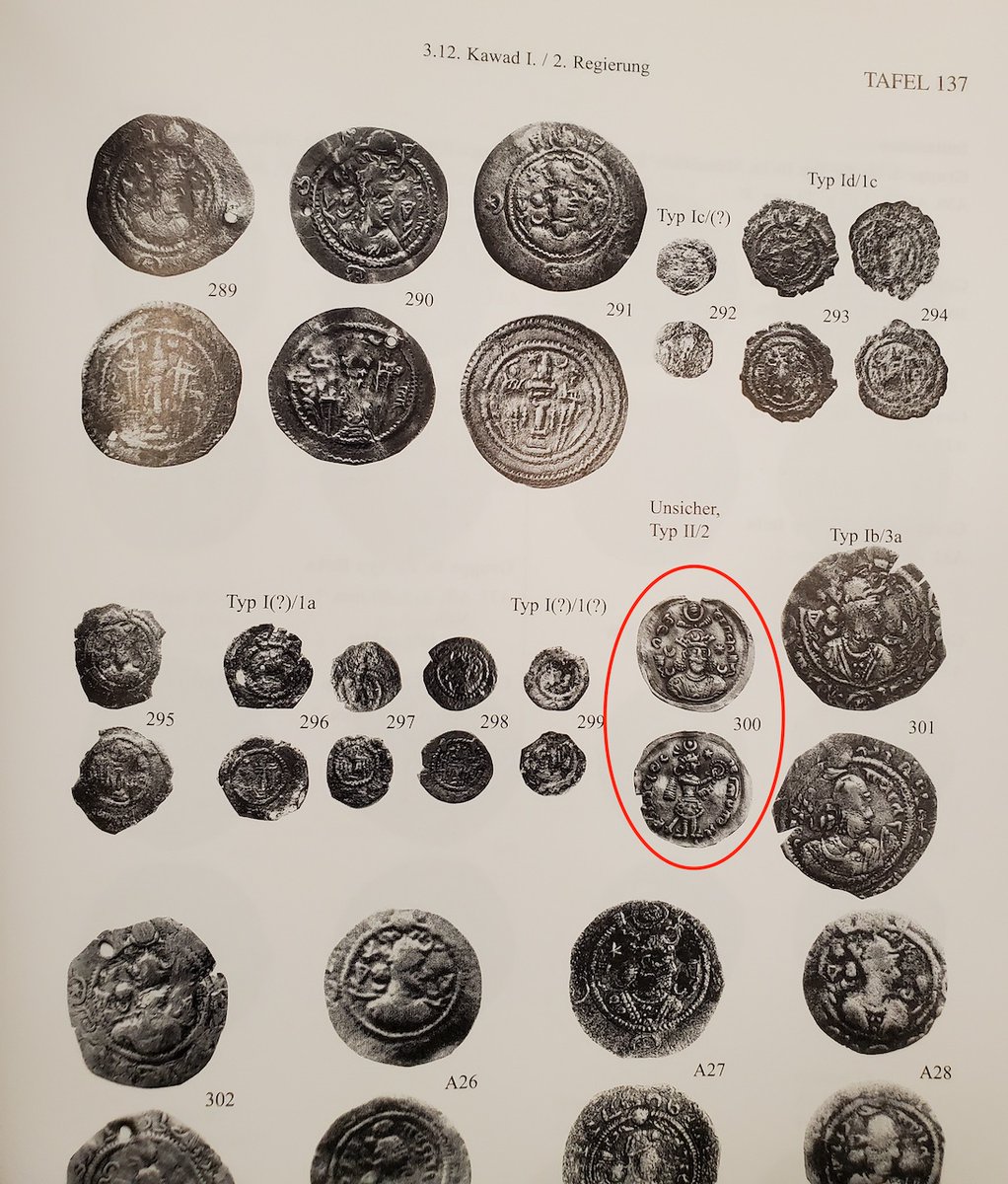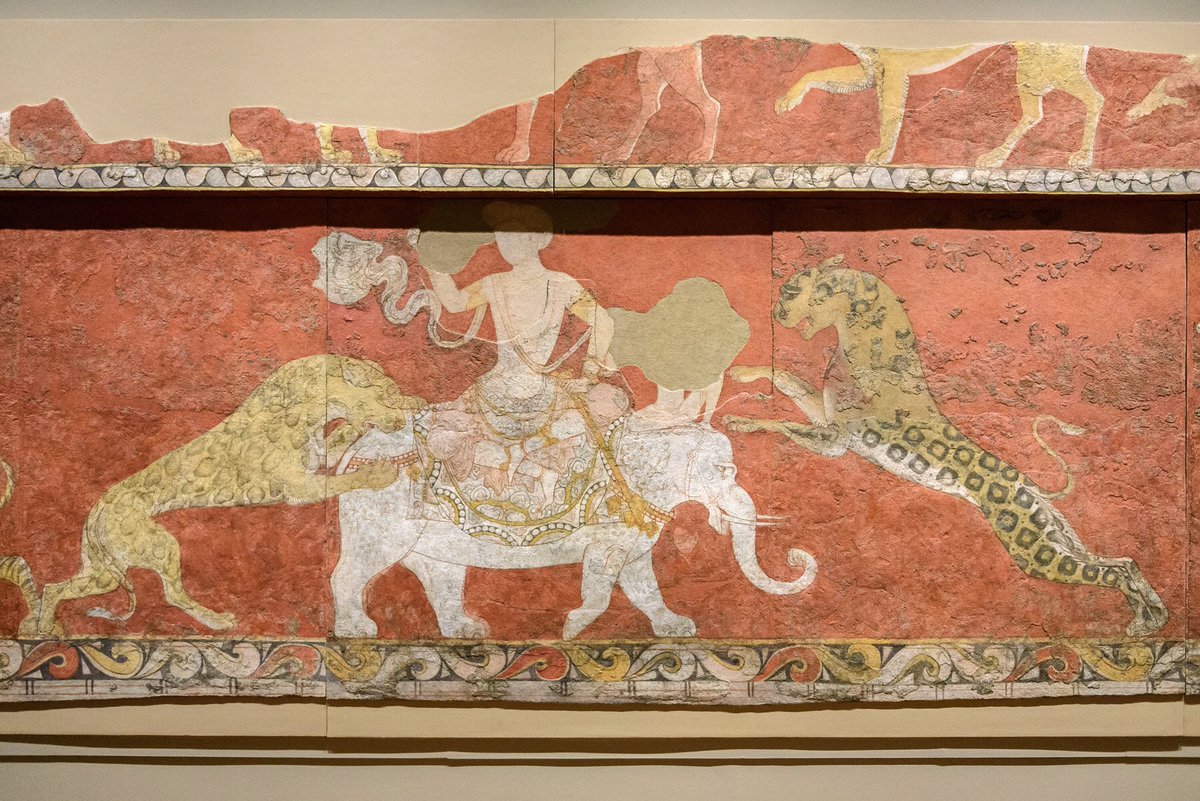Discover and read the best of Twitter Threads about #Sogdian
Most recents (10)
A question arose re headwear of ancient Iranians. So I will try to provide a clear answer:
Ancient Iranian beliefs provided that the elements should not be polluted. That includes earth & fire
There were 2 general ways to achieve this: 1) Kyrbasia; 2) Padām (MP) = Padan
⤵️

Ancient Iranian beliefs provided that the elements should not be polluted. That includes earth & fire
There were 2 general ways to achieve this: 1) Kyrbasia; 2) Padām (MP) = Padan
⤵️


1) Kyrbasia: (Old Persian: *kurpāsa) was a type of headgear with additional fabric to cover the mouth or part of face
It is erroneously referred to as a Bashlyk, the Turkic word for a similar headwear
⤵️

It is erroneously referred to as a Bashlyk, the Turkic word for a similar headwear
⤵️


It appears in Achaemenid era and close to that time, the Kyrbasia was preferred, or at least we see it in surviving depictions.
Here we see the complete Iranian riding attire, @mihomuseum
⤵️
Here we see the complete Iranian riding attire, @mihomuseum
⤵️

When we want to recreate Sasanian military, armour, clothing... we need to consider new finds, lesser known sites & artefacts to really understand the evolution & use of various components
Let's say for example multiple friezes from Bishapur showing riders
⤵️

Let's say for example multiple friezes from Bishapur showing riders
⤵️
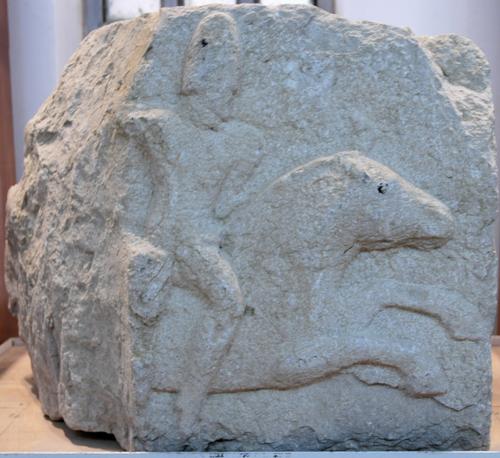
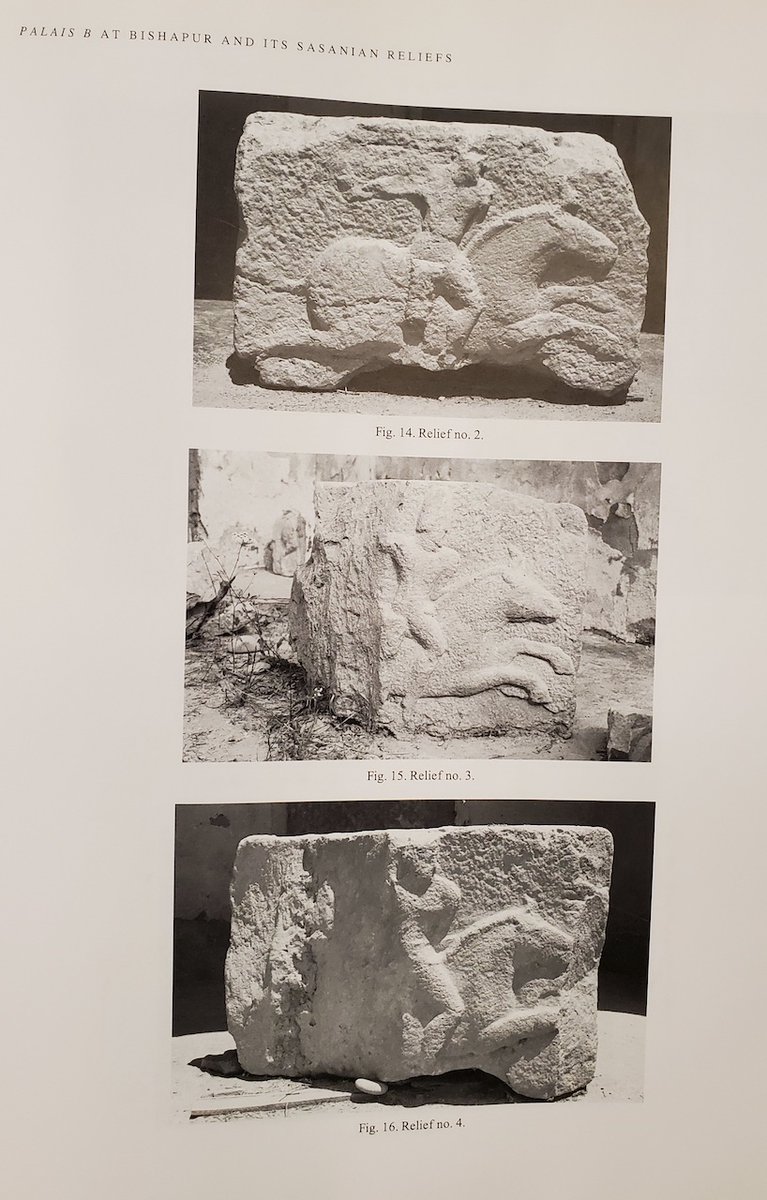
1. My #SamarkandSummit orientalist🧵on its toponym and etymology. Incorrect is #Wikipedia's #Samarkand etymon entry and false analogy to #Tashkent. Both #Samarkand, like neighbouring #Bukhara, remain extensively debated in eastern #MiddleIranian #philology.
2. #Samarkand, contra #Wikipedia, is not 'stone city'. The first element /sm’r/ remains unexplained. On #Sogdian sm’rknδh [Ancient Letters], cf. Chin. Samojian 颯秣建 Gr. Μαρακάνδοι, scholarly consensus exists only on second compound, #Sogdian 'town, city'.
3. #Sogdian knδh 'town, city' > #Christian #Sogdian qθ; /sm’r/ element unmentioned in Gharib 1995 [Sogdian #Dictionary], @iranicaonline, or EI2 [Enc. of #Islam) entries. See @Brill_ME_Africa EI2, VIII/1995: 1031-032, s.v. #Samarkand Schaeder (rev. Bosworth). 

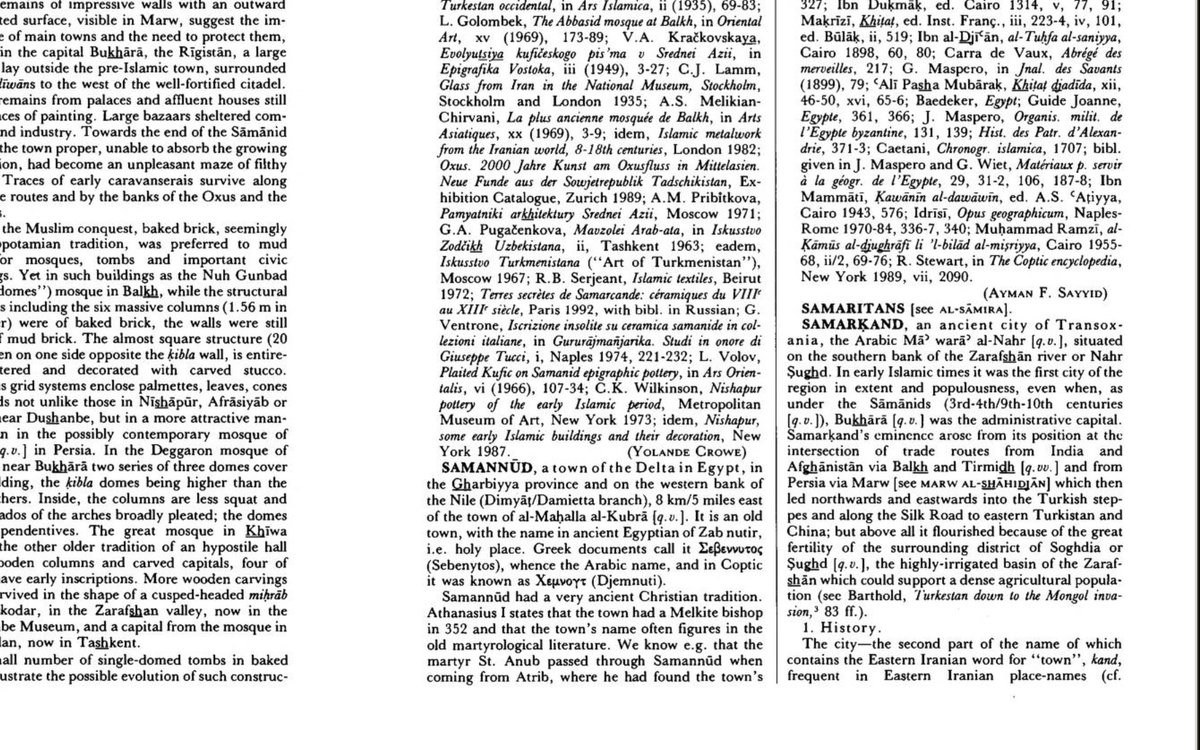

24 #Iranian motifs & designs used for centuries from China to Rome: Part 3
۲۴ طرح و نقش ایرانی که از چین تا روم برای چند صد سال استفاده میشده.
No. 19) Mythological Creatures: Winged horse
⤵️🧵
۲۴ طرح و نقش ایرانی که از چین تا روم برای چند صد سال استفاده میشده.
No. 19) Mythological Creatures: Winged horse
⤵️🧵

I don't agree with Dr. Canepa. Oldest reps of winged horse are from Iran. At least they're from same time as those in Greece. Not to say later depictions didn't have some contact with Greek forms too, but winged horse/Pegasus has been an important Iranian mythological creature
... for millennia. See for example:
1: Sialk, 10-9 C BCE
2: from ancient Luristan, @MuseeLouvre
4: 8-7 C BCE, @metmuseum
⤵️



1: Sialk, 10-9 C BCE
2: from ancient Luristan, @MuseeLouvre
4: 8-7 C BCE, @metmuseum
⤵️




24 #Iranian motifs & designs used for centuries from China to Rome: Part 2 |
۲۴ طرح و نقش ایرانی که از چین تا روم برای چند صد سال استفاده میشده: بخش دوم |
Talked about 10 motifs before. The rest fall in category of animals & plants, besides geometric patterns
🧵⤵️
۲۴ طرح و نقش ایرانی که از چین تا روم برای چند صد سال استفاده میشده: بخش دوم |
Talked about 10 motifs before. The rest fall in category of animals & plants, besides geometric patterns
🧵⤵️

11) Boars: widespread among Iranian groups. It's likely where Zoroastrianism or more generally Iranian religions have been practiced, that at least boar heads could be symbols of deity Verethragna (Bahram: بهرام):
Previous thread on first 10 motifs:
⤵️
Previous thread on first 10 motifs:
⤵️
۲۴ طرح و نقش ایرانی که از چین تا روم برای چند صد سال استفاده میشده |
Iranian Identity: 24 #Iranian motifs & designs used for centuries from ancient China to Rome. |
1: 3-dot or 3-pearl motif: Very popular in Sasanian Iran...
⤵️🧵
Iranian Identity: 24 #Iranian motifs & designs used for centuries from ancient China to Rome. |
1: 3-dot or 3-pearl motif: Very popular in Sasanian Iran...
⤵️🧵

It's likely an aniconic representation of the Iranian, Zoroastrian deity Tishtrya | تیشتَر , though at times it could have taken a simple astronomical meaning as well
Spot it on clothing!




Spot it on clothing!




1: 3-dot or 3-pearl motif
Undoubtedly, this design is Iranian, #Sasanian or possibly pre-Sasanian in origin.
Representations at Taqe Bostan, including on clothing of Ahura Mazda. These parts of Taqe Bostan are associated with Khosrow II (570-628)
Given internal...
⤵️



Undoubtedly, this design is Iranian, #Sasanian or possibly pre-Sasanian in origin.
Representations at Taqe Bostan, including on clothing of Ahura Mazda. These parts of Taqe Bostan are associated with Khosrow II (570-628)
Given internal...
⤵️



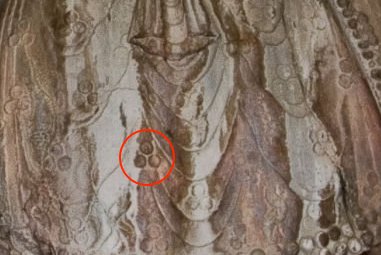
Ancient Iranian Devices, Insignia & Monograms
نشان های کهن ایرانی
One of the most enigmatic, least studied aspects of #Iranian history & culture
Check this thread out to find out more, and please #retweet & share. You won't find all this info elsewhere!
🧵⤵️⚡️
نشان های کهن ایرانی
One of the most enigmatic, least studied aspects of #Iranian history & culture
Check this thread out to find out more, and please #retweet & share. You won't find all this info elsewhere!
🧵⤵️⚡️

I might one day turn this into a paper. But for now, let's look at this really cool part of our history! I am so excited!!
What I will call "devices" are abstract signs, seals... that got progressively more complex by end of #Sasanian era. They are also called #Tamga (or tamgha)
What I will call "devices" are abstract signs, seals... that got progressively more complex by end of #Sasanian era. They are also called #Tamga (or tamgha)
Tamga from Turkish. In Middle Persian and modern Persian, the word would be Nishaan or Neshaan ( Ossetian gakk)
These have an amazing and long history. They might have started as signs for cattle, later for clans & families. Were used by people across Eurasia
These have an amazing and long history. They might have started as signs for cattle, later for clans & families. Were used by people across Eurasia
Look at these 10/10 extremely good bois
THREAD about birb in Iranian art 🦆🦚🐓🦅🐣
~ NA @eranudturan #HistoryofIran
patreon.com/eranudturan

THREAD about birb in Iranian art 🦆🦚🐓🦅🐣
~ NA @eranudturan #HistoryofIran
patreon.com/eranudturan


You’ll notice that #ducks are REALLY common in #Sogdian art, appearing primarily in #textile (there’s also a wooden painted panel from Kucha). They almost always hold a necklace in their beaks
~ NA @eranudturan #Historyofiran



~ NA @eranudturan #Historyofiran




They sometimes appear in conjunction with pheasants, who often wear a necklace around their necks.
What’s this motif all about?
~ NA #HistoryofIran

What’s this motif all about?
~ NA #HistoryofIran
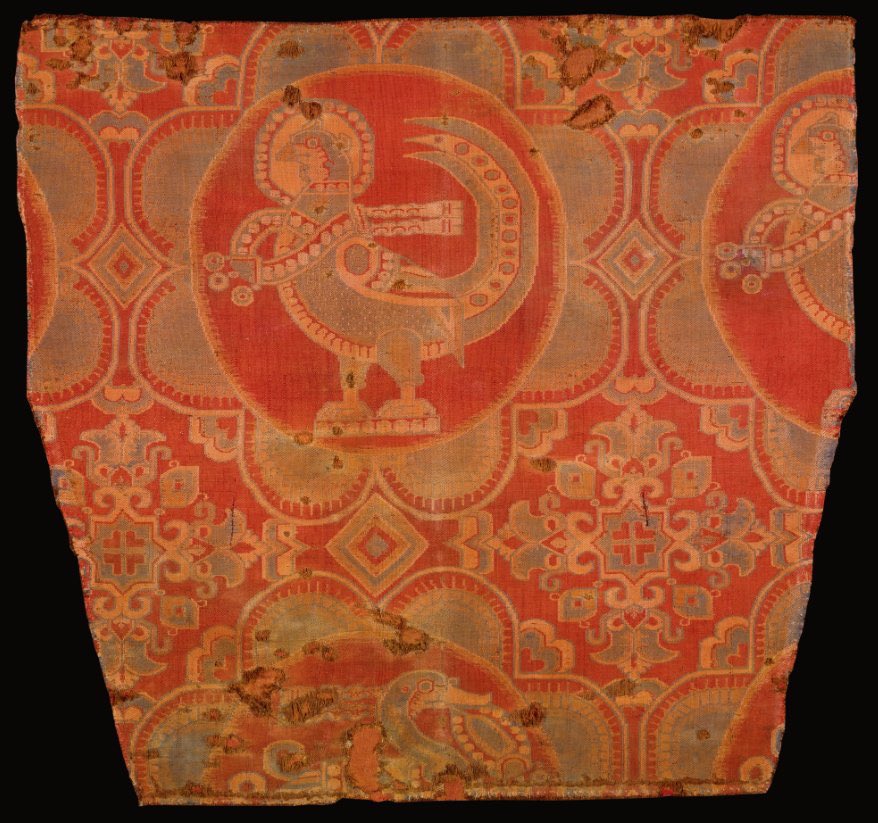

You might think looking at these paintings that Panjakent society was a society of warriors.
While there were the odd few pieces of arms and armour found there, so far, no stables have been found.
These paintings usually adorned ordinary houses and often told stories.
THREAD
While there were the odd few pieces of arms and armour found there, so far, no stables have been found.
These paintings usually adorned ordinary houses and often told stories.
THREAD
The most famous of these stories is the “Rostam cycle,” the earliest evidence of the famous hero from Ferdowsi’s #Shahnameh. Rostam wears his leopard skin coat and has an elongated skull, a hark back to the Hunnic / Hephthalite kings of Bactria. ~NA @eranudturan 







In this story, Rostam sets out to fight the divs (demons), encounters Avlad, has to fight a dragon, duels with the King of the divs, and fights the army of the divs. The whole composition bends around the corners of the room, and was probably copied from a scroll ~NA
Ok, lets talk about Varakhsha, a town near #Bukhara that contained a painted palace and became the seat of the #Sogdian rulers of Bukhara from the Arab conquest (early 8th C) until the rise of the Samanids (late 9th C)
THREAD
~ NA @eranudturan #HistoryofIran



THREAD
~ NA @eranudturan #HistoryofIran



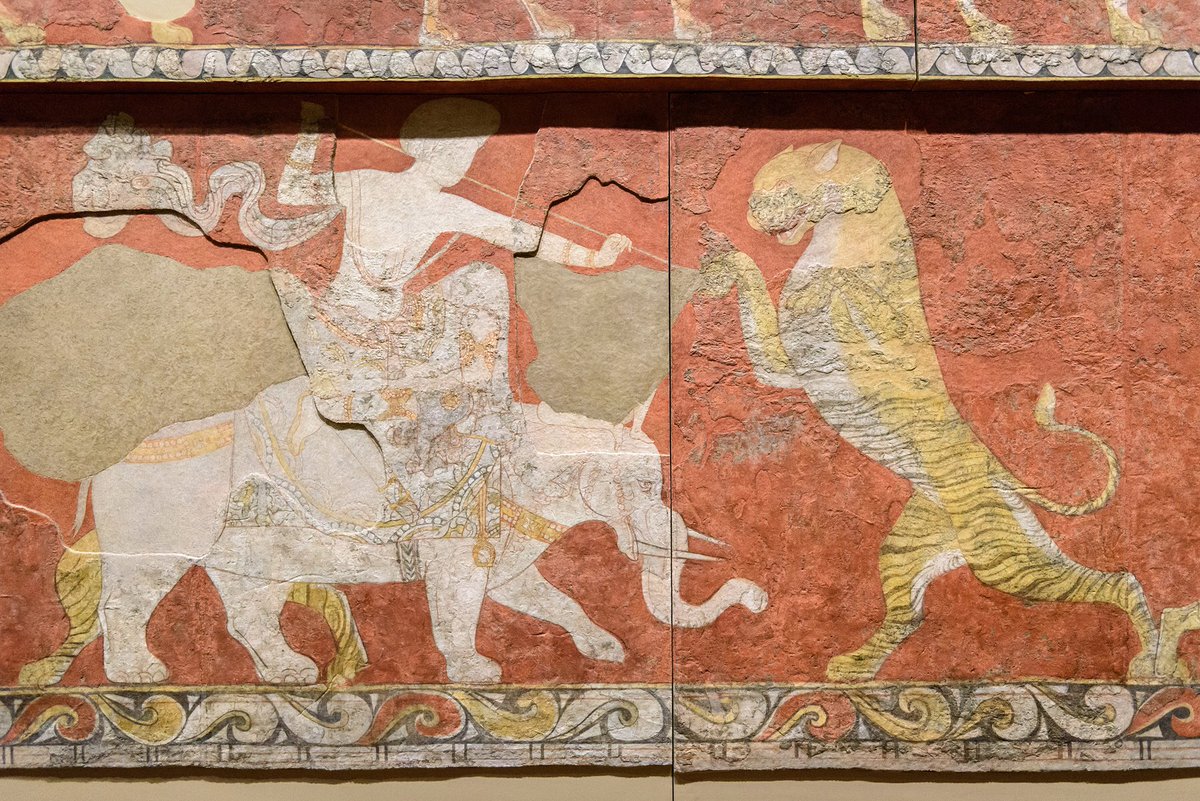
The palace was built probably in the late 7th Century, but the most famous paintings, the Red Hall, date from the early 8th C from the reign of Tughshada, the son of the famous Queen of #Bukhara, about whom I wrote here: patreon.com/posts/who-was-…
~ NA


~ NA




